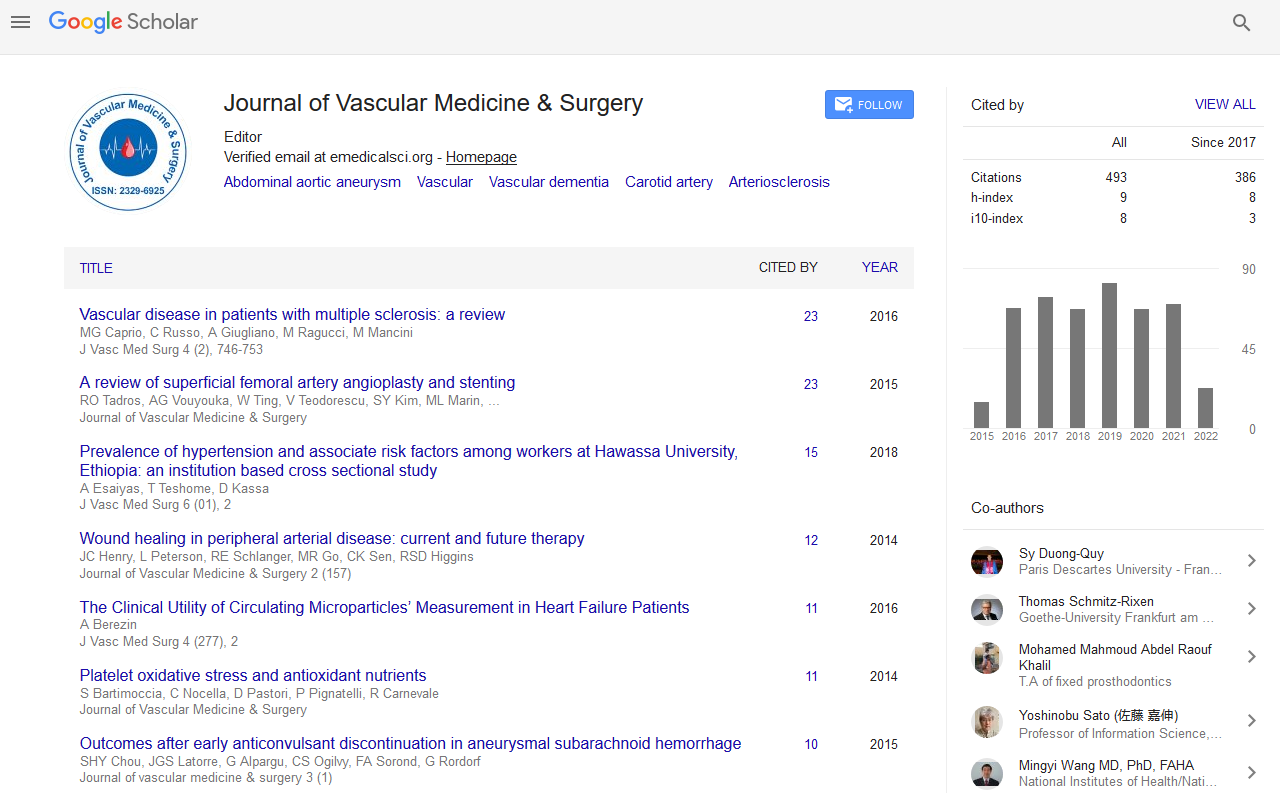Indexed In
- Open J Gate
- Academic Keys
- RefSeek
- Hamdard University
- EBSCO A-Z
- OCLC- WorldCat
- Publons
- Euro Pub
- Google Scholar
Useful Links
Share This Page
Journal Flyer

Open Access Journals
- Agri and Aquaculture
- Biochemistry
- Bioinformatics & Systems Biology
- Business & Management
- Chemistry
- Clinical Sciences
- Engineering
- Food & Nutrition
- General Science
- Genetics & Molecular Biology
- Immunology & Microbiology
- Medical Sciences
- Neuroscience & Psychology
- Nursing & Health Care
- Pharmaceutical Sciences
Abstract
Validating Effect of Sulodexide in Treatment of Claudication Pain and Chronic Limb-Threatening Ischemia
Lubos Kubicek*, Martin Dvorak and Robert Staffa
Background: Peripheral arterial disease is a chronical disease which can lead to a sever quality of life reduction and in certain cases there is no indication or even possibility for revascularization and these patients are reliant on conservative therapy such as Sulodexide medication.
Objective: In the retrospective study we evaluated effect of newly administrated Sulodexide therapy for patients with peripheral arterial disease both in cases of claudication pain and patients with chronic limb-threatening ischemia (CLTI).
Methods: During a three year period we started Sulodexide therapy in 34 claudication and 38 CLTI cases with no contemporary revascularization procedure. Patients were followed for 4 and 8 months with claudication interval, Rutherford classification and CLTI evaluation.
Results: We observed overall positive effect of Sulodexide in both groups. In claudication group there was a prolongation of average pain-free walking distance (PFWD) from 144 m at the baseline to 376 m at 4 months and 430 m at 8 months. In the second group all 38 patients started with CLTI symptoms, after 4 months 6 patients remained with CLTI and after 8 months 3 more had recurrence of CLTI.
Conclusion: We observed a significant improvement both in PFWD in claudication sub-group and even in a clinical status of majority of the patients in CLTI sub-group. This effect of Sulodexide on CLTI patients was not yet thoroughly described in any available literature. According to our observations, Sulodexide seem to be a potent auxiliary therapy for patient with peripheral arterial disease even in the case CLTI.
Published Date: 2021-03-12; Received Date: 2021-02-19


